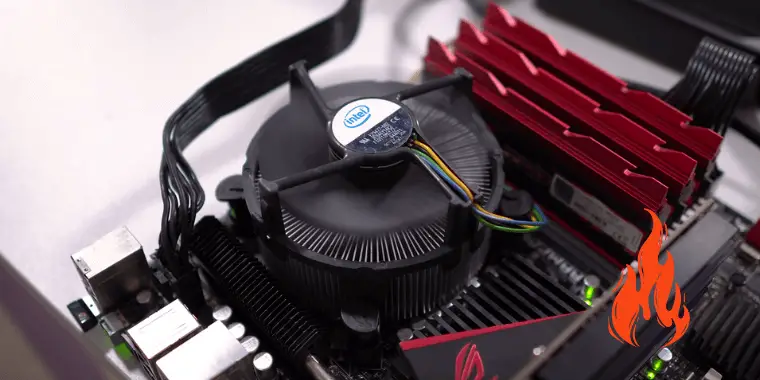
On any given day, your computer is probably doing dozens of tasks. Maybe you’re browsing the internet, writing a report, doing some gaming, or streaming a movie.
Your computer’s central processing unit (CPU) is hard at work during all this use. But what if one of those cores works significantly harder than the others?
It’s not uncommon for individual CPU cores to run at different temperatures. This is usually nothing to worry about. But, if you consistently notice one CPU core hotter than others, it could be a sign that there’s a problem.
In this guide, we’ll explore the possible causes of a hot CPU core and offer some solutions on how to fix it.
- What Is a Normal CPU Temperature Range for a Laptop/Desktop Computer?
- How Do You Know if One of Your CPU Cores Is Hotter Than Other Core Temps?
- What Does It Mean if One CPU Core Is Hotter Than the Others?
- What Causes One CPU Core to Get Hotter Than Others?
- The Way Programs Work
- Too Many Active Software Threads
- A CPU Running at Full Capacity
- Broken Processor Module
- Losing Power to Certain Cores
- Overclocking
- Incorrect BIOS Settings
- Improper Cooling
- Bad or Worn-Out Thermal Paste
- Incorrectly Installed or Blockage in Heatsink
- Hardware Issues
- Driver Problem
- Other Software Issues
- How to Fix One CPU Core That’s Hotter than Others?
- Reapply Thermal Paste
- Upgrade Your CPU Cooler
- Make Sure the Heatsink Is Installed Correctly
- Kill off Unnecessary Background Processes
- Update Your Drivers
- Disable Core Parking
- Disable Turbo Boost or Intel SpeedStep in BIOS
- Check for Faulty Sensors
- Update BIOS Firmware for the CPU
- Change Power Plan Settings
- Clean Your Computer’s Interior
- Always Monitor Your CPU Temperature
- Frequently Asked Questions
- Conclusion
What Is a Normal CPU Temperature Range for a Laptop/Desktop Computer?
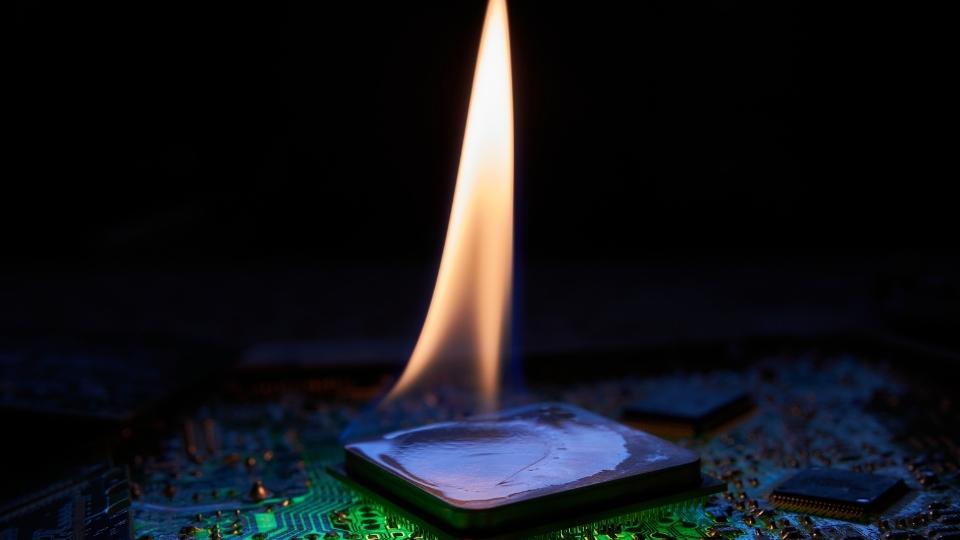
So, first things first – what is considered to be a normal temperature range for a CPU?
There’s no one-size-fits-all answer to this question. What’s normal for your specific PC is mostly determined by how you use it, what components are in it, and how well it was put together.
However, as a general rule of thumb, you can expect your computer to run at a temperature of about 113°F(45°C) when idle or performing low-intensity tasks like web browsing.
When your computer is working hard, though, that number will climb. A CPU running at full capacity could get up to 160-176 degrees Fahrenheit (70-80 degrees Celsius), especially in a hot room.
But what if you see numbers above 176°F? That could be a sign that there’s a problem – either with your CPU itself or with how it’s installed in your computer.
It might be that a fan isn’t working right or that the thermal paste between your CPU and heatsink isn’t doing its job. Or maybe something is blocking the airflow to your computer case (more on this in the later segments).
Now, when it comes to only a single core having a significant temperature rise regardless of anything else, you should only worry if it gets hotter than the rest by more than 10°F.
Whatever the cause, you’ll want to take care of it ASAP to ensure that your components aren’t getting damaged by excessive heat.
How Do You Know if One of Your CPU Cores Is Hotter Than Other Core Temps?
Determining whether one of your CPU cores is hotter than the others is pretty simple. You can use a Windows or Mac application like HWiNFO or Core Temp to track the temperature of each core in your processor.
Both are easy to install and use, and they’ll give you information about the temperature of all four of your cores, plus a few other useful stats.
What Does It Mean if One CPU Core Is Hotter Than the Others?
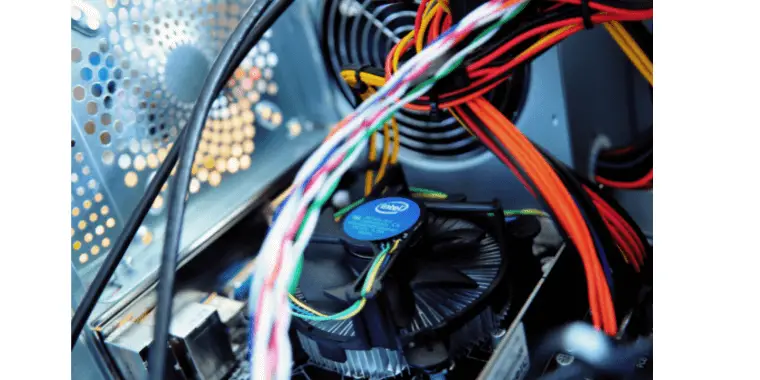
If one of your CPU cores runs significantly hotter than the others, it can mean a few things. Such as:
The Core Is Overheating
If one core is consistently running hot, that core is probably overheating. This means that the core is getting too much heat for it to handle, so it’s shutting down temporarily in order to protect itself from permanent damage.
One Core Is Overused
If one core is consistently getting hotter than the others, it’s likely that that core is being overused. This means that it’s taking on more load than it can handle, which is causing it to overheat.
One Core Is Malfunctioning
When one core is always running hotter than the others, that core may be malfunctioning. This means that there’s something wrong with the way it’s working, which is causing it to overheat.
What Happens When One CPU Core Gets Hotter Than the Rest?
When one CPU core gets hotter than the others, it can cause several problems.
First, it can lead to the computer starting to throttle the performance of the hottest core, which can lead to reduced overall performance. This is because the hotter core is working harder than the others, and it’s likely to overheat and shut down if it gets too hot.
Second, it can damage your computer’s components. Excessive heat can cause your CPU to overheat, which can lead to permanent damage. It can also cause your motherboard to overheat, potentially deteriorating or even killing your computer.
Third, it can be a sign of a hardware failure. If one core is consistently running hotter than the others, there’s probably something wrong with that core―and it might eventually fail completely.
What Causes One CPU Core to Get Hotter Than Others?
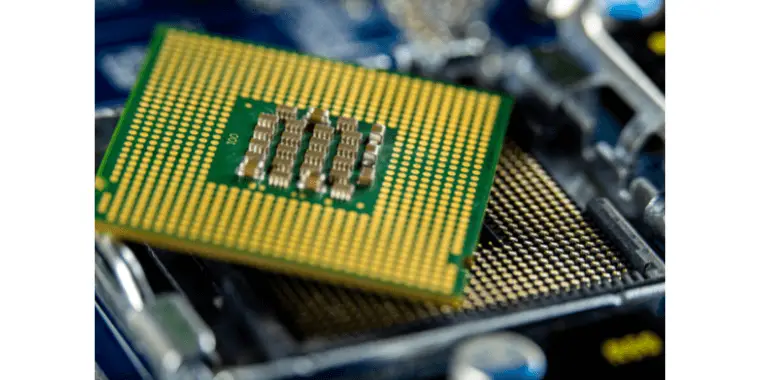
A computer with one hotter-than-average CPU core may be overheating or just having trouble keeping cool. There can be many reasons why one core on your CPU runs significantly hotter than the others. Some of the more common causes include:
The Way Programs Work
In most cases, the way the majority of applications work explains why one core is running hotter than others. Computer programs are typically single-threaded, meaning that they can only use one core at a time.
So, when an application is running, it will use the core that it’s been assigned to (usually the first one). The other cores in the processor will remain idle until that program is finished.
This can cause one core to take more load all at once, increasing its temperature, especially if that core is being used for a more intensive task like gaming or video editing.
Additionally, multi-core CPUs are designed to handle multiple tasks at once. However, most applications aren’t always optimized to take advantage of this, so they’ll only use one core. This can also lead to the overuse of specific cores and can cause them to run hotter than the others.
Too Many Active Software Threads
Another potential cause of one CPU core running hotter than the others is that there are too many active software threads. When an application is multi-threaded, it can use multiple cores simultaneously.
So if you have a lot of active applications with multiple threads running, it can lead to higher temperatures on specific cores. This is because all of those threads are trying to use the cores at the same time, leading to more thermal load and possible overuse.
A CPU Running at Full Capacity
When a CPU is running at full capacity, it’s working as hard as it possibly can. This puts more stress on the individual cores, causing them to run hotter than when the CPU isn’t being used as heavily.
If you’re seeing high temperatures even when your computer is idle, it’s likely that your CPU is running at full capacity, and one or more cores are experiencing higher than normal temperatures.
Broken Processor Module

Another potential cause of one CPU core running hotter than the others is a broken processor module. If one of the cores in your processor isn’t working correctly, it can cause that core to run much hotter than the others. The defective core can’t cool down like the others, leading to increased temperatures.
Losing Power to Certain Cores
If your computer is losing power to certain cores, it can cause those cores to run hotter than the others. This is because they’re not getting the power they need to run at their full capacity, causing them to overheat as a way to cover up the additional load deficit.
Overclocking
Overclocking is a process of increasing the speed of your CPU beyond its factory settings. While it can result in increased performance, overclocking also puts more stress on the individual cores, causing them to run hotter.
If you’re seeing high temperatures even when your computer is idle, it might be because you’ve overclocked your CPU, and now one or more cores are running too hot.
Incorrect BIOS Settings
If your computer is having trouble keeping cool, it might be because of incorrect BIOS settings. This can include things like setting the fan speed too low or not enabling ACPI support. If you’re not sure how to change your BIOS settings, you can consult your motherboard’s manual or search online for specific instructions.
Improper Cooling
If your computer isn’t properly cooling its CPU, it can cause one core to run hotter than the others. This is usually because the fan on the CPU cooler isn’t working correctly, or there isn’t enough airflow in the system. It can also be caused by dust and dirt buildup on the heatsink or fan.
Bad or Worn-Out Thermal Paste
Another common reason for a CPU running hotter than normal is bad, worn-out, or lack of thermal paste. Thermal paste is a material used to create a better contact between the CPU and the heatsink.
If it’s old, dried up, or has been scraped multiple times, it can start to fail, and it won’t be able to properly transfer the heat from the CPU. This may cause one core to run much hotter than the others.
Incorrectly Installed or Blockage in Heatsink
If your CPU is running too hot, it might be because the heatsink is installed incorrectly or there’s a blockage in it. If you leave gaps between the heatsink and a portion of the CPU, it can cause that area to overheat.
Similarly, if there’s a lot of dust and dirt buildup in the heatsink or fan, it can prevent them from doing their job and lead to increased CPU temperatures.
Hardware Issues
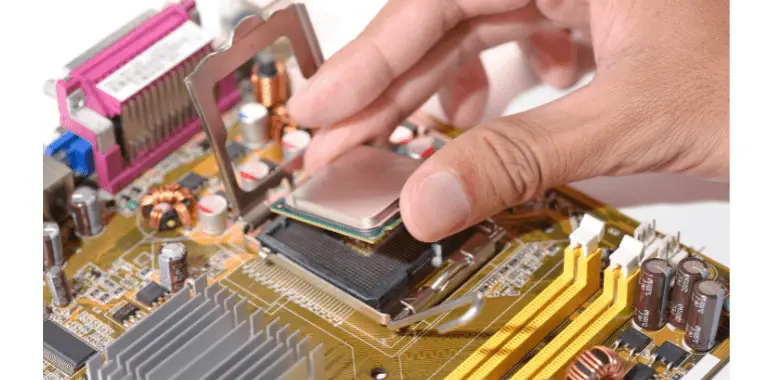
A single hot CPU core could mean that your computer has suffered physical damage that keeps it from cooling off properly.
If the fan is broken, the dust appears to be obstructing airflow, or something else seems wrong with the hardware, you need to do some troubleshooting right away before further damage occurs.
Driver Problem
Running programs with faulty drivers or not updating your drivers regularly can also lead to one CPU core running hotter than the others. When the drivers for your hardware aren’t working correctly, it can cause conflicts and overuse, leading to overheating.
If you want to check if your drivers are up to date click here for Intel drivers or here for AMD drivers
Other Software Issues
Overheating can also occur due to software issues like malware infections or system instability caused by buggy graphics applications.
If you’re experiencing high CPU usage, even when your laptop isn’t under heavy load, it could be due to background processes from spyware or other sorts of malware. You should run a malware scan to rule this out.
How to Fix One CPU Core That’s Hotter than Others?
If you’ve figured out that one of your cores is running hotter than the others, there are several things you can do to try and fix the problem:
Reapply Thermal Paste
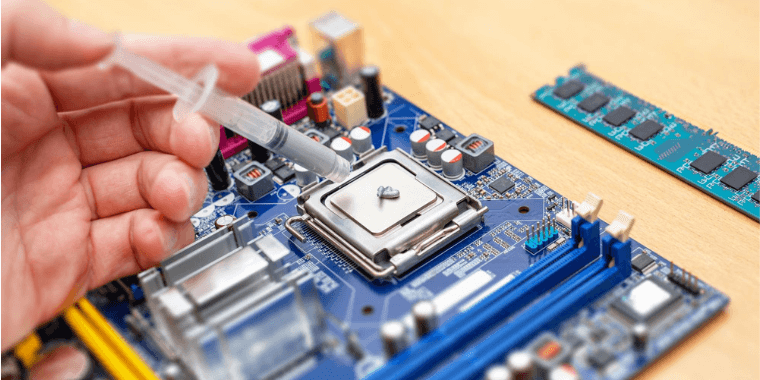
The first and simplest thing you can do is to reapply thermal paste. The thermal compound helps transfer heat from the CPU to the heatsink, and if it’s old or dried up, it might not be doing its job properly.
However, the application process is where things get tricky. Some make the mistake of using the line method – spreading the pastedown in the middle of the CPU and expecting it to evenly cover the surface. Others may end up using too much, which will also decrease its effectiveness.
The best way to apply thermal paste is to use a pea-sized amount in the center of the CPU and then set the cooler on top. You can also use a q-tip to spread it around and make sure there are no air bubbles.
Upgrade Your CPU Cooler
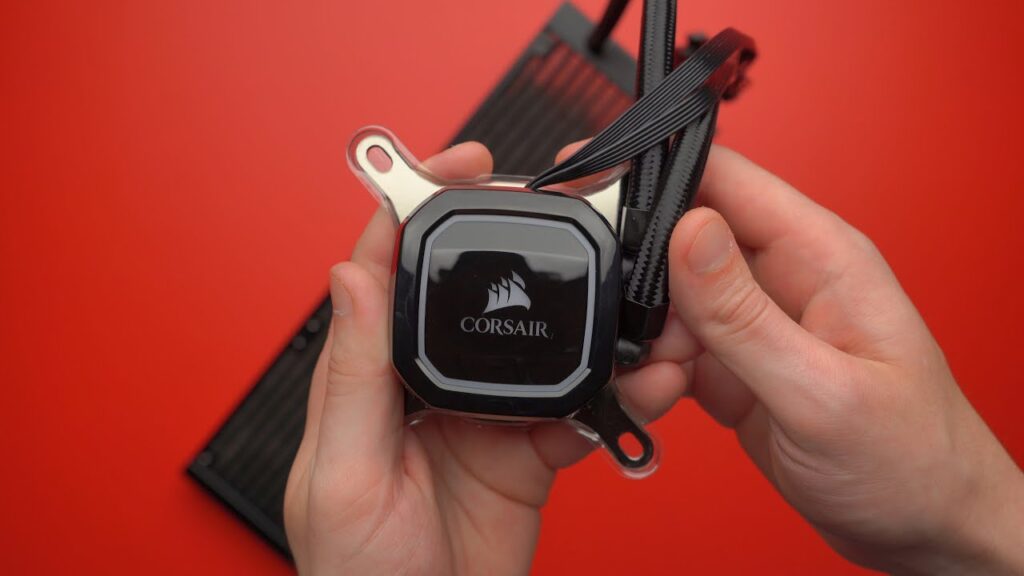
If your computer has been running hot for a while, and the thermal paste hasn’t fixed the issue, it might be time to upgrade your CPU cooler. A good CPU cooler can work wonders in keeping your CPU cool, and it’s a fairly easy process to do.
There are many different types of CPU coolers to choose from, so make sure you do some research before buying one. These types include liquid cooling systems, tower coolers, and even custom-built solutions.
Make Sure the Heatsink Is Installed Correctly
After a proper reapplication of the thermal compound, you’ll have to ensure a successful cooling system upgrade by ensuring the heatsink is installed correctly.
Many people make the mistake of not pushing down on the heatsink hard enough, which will lead to air gaps and a decrease in cooling efficiency.
You should also make sure that there’s no debris blocking the fan or airflow path, as this can cause overheating problems as well.
Kill off Unnecessary Background Processes
Sometimes it’s hard to know if some processes are running in the background and, often, making your processor work harder than it should.
If you’re not sure what’s causing the problem, it can be helpful to use the Task Manager’s processes tab (press Alt+Ctrl+Del) to see which programs are using up the most resources.
And if you want to take a deeper look, programs like Process Hacker can give you more information about specific processes and how to stop them. It’ll also give you an overview of workloads in each CPU core, to see if one is being overworked.
Once you’ve identified any suspicious processes, you can try and close them or uninstall them completely. This might take a little bit of trial and error, but it’s worth it if it means your computer runs cooler and faster.
Update Your Drivers
If you’ve tried all of the above and your computer is still running hot, it might be time to update your drivers. Outdated or incompatible drivers can often lead to system instability and conflicts, which can, in turn, lead to overheating.
It’s essential to be sure that you’re using the latest drivers for your hardware – especially if you’re experiencing problems. You can check for driver updates on the manufacturer’s website, regular Windows updates, or use a program like Driver Booster to automate the process.
Disable Core Parking
Windows has the ability to “park” cores when they’re not in use to save power and resources. Unfortunately, this can sometimes lead to uneven CPU temperatures if one core is parked while the others are still active.
You can disable core parking by editing the registry or using a program like ParkControl. Remember that disabling core parking can increase power consumption, so it’s best to only do this if you’re experiencing severe overheating problems.
Disable Turbo Boost or Intel SpeedStep in BIOS
Intel SpeedStep is a feature that allows the CPU to dynamically change its clock speed in order to save power. However, this too can lead to uneven temperatures if one core runs slower than the others.
You can disable Intel SpeedStep in BIOS by going into the Advanced Settings and changing the “Dynamic Power Management Setting.” You can also disable Turbo Boost in BIOS, though this might decrease your system’s overall performance.
If you’re having trouble finding these settings in your BIOS, it’s best to consult your motherboard’s manual or search for specific instructions online.
Check for Faulty Sensors
Sometimes the root of overheating problems can be a faulty or misconfigured sensor. If you’re not sure where to start, it can be helpful to use a program like Core Temp to see which sensors are reporting high temperatures.
If you see any sensors consistently reporting high temperatures, try disabling them in BIOS or changing their corresponding settings.
You might also want to rule out any hardware problems by plugging your computer into an external monitor and checking the temperatures there.
Update BIOS Firmware for the CPU
Some CPUs come with updated firmware that can help improve cooling performance and fix that one burning core. So, if you’re experiencing these problems, it might be worth checking to see if there’s a newer firmware version available for your CPU.
You can usually find this information on the manufacturer’s website or search for your specific CPU model online. Be sure to read the instructions carefully before updating your BIOS―it’s possible to brick your motherboard if you do it wrong.
Change Power Plan Settings
Windows has several different power plans that you can use to save power and extend your battery life. However, these plans can also lead to uneven CPU temperatures if one core is running at a slower speed than the others.
You can change the power plan settings by going into Control Panel > Power Options. From there, you can select a specific plan or create your own custom plan. Be sure to check the “High Performance” option if you want your computer to run at its full potential.
Clean Your Computer’s Interior
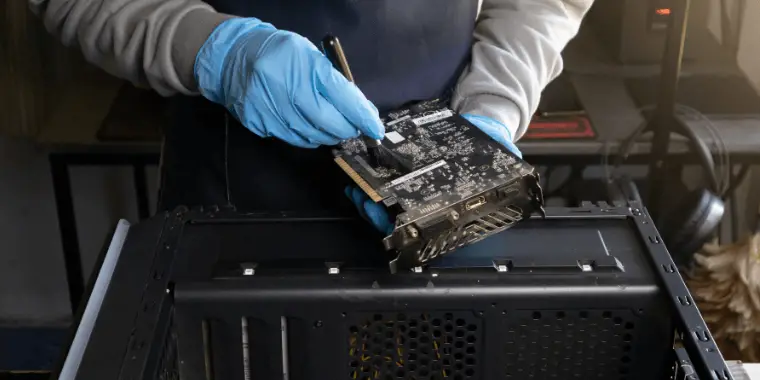
Over time, dust and dirt can accumulate inside your computer and cause overheating problems. So, it’s a good idea to clean your computer’s interior every once in a while – especially if it’s been sitting in a dusty environment.
You can clean your computer’s interior with a vacuum cleaner and some compressed air or use a specialized cleaning kit. Be sure to unplug your computer before starting any cleaning process!
If you’re not comfortable doing this yourself, it’s best to take your computer to a professional for cleaning.
Always Monitor Your CPU Temperature
One of the best ways to troubleshoot overheating problems is to monitor your CPU temperature. This can be done with software like Core Temp or HWMonitor, or the BIOS interface.
If you’re seeing unusually high temperatures, it might be time to take some of the steps mentioned above to cool down your CPU.
Frequently Asked Questions
Yes, 110°is super hot for a CPU. In fact, most CPUs will start to slow down or shut down at that point in order to prevent permanent damage.
No, Core Temp and CPU temp are not the same. Core Temp is a program that measures the temperature of your CPU’s cores, while CPU temp is the overall temperature of your computer.
No, not all CPU cores should always necessarily be at the same temperature. You should only start worrying if one core frequently gets hotter than the others by more than 10°F.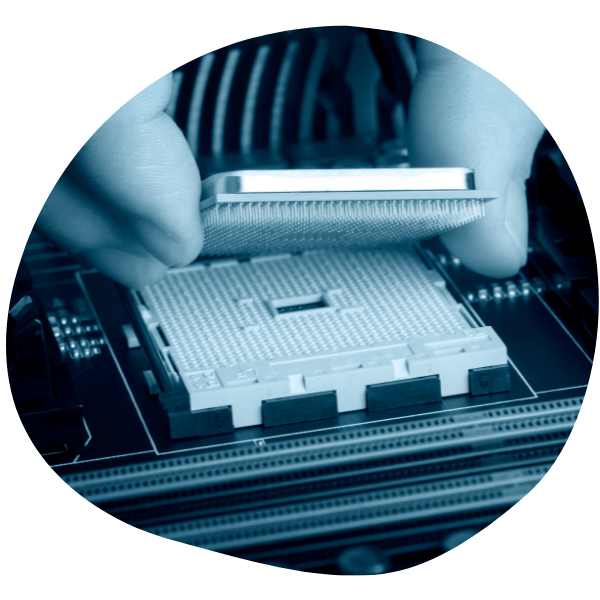
It depends on your CPU and the programs running in the background. However, 70°C is generally considered the threshold for safe CPU operation. If your CPU regularly reaches or exceeds that temperature, you should take measures to cool it down.
Not until the temp goes under 10 or 20 degrees below the room temperature. In such cases, condensation may occur, leading to moisture buildup in the circuits, causing a shorter motherboard and other hardware lifespans.
Conclusion
Your computer’s CPU is a delicate device, and it needs to be treated with care. If you’re experiencing one CPU core hotter than the others, you can do a number of things to cool it down and get it back to normal.
In most cases, one of the solutions listed in this article should be enough to get the job done without calling in professional help. And by practicing some good computing habits with the right prevention measures, you can keep your CPU running cool and stable for years to come.